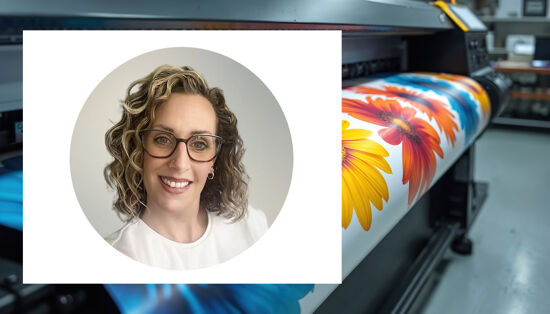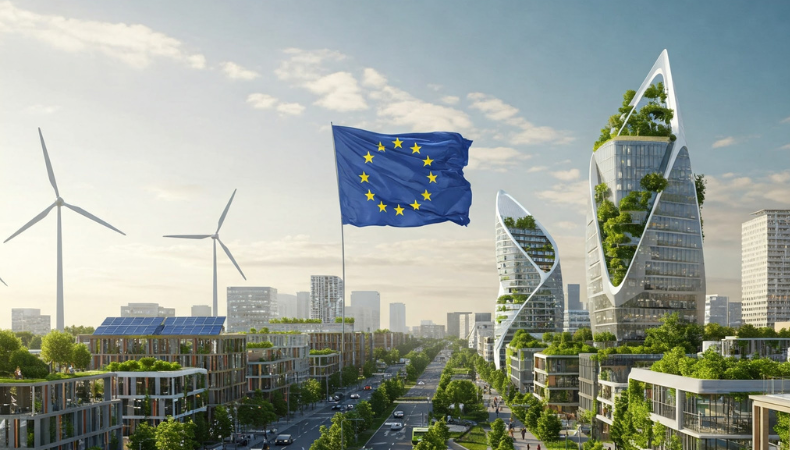Sustainable sportswear: Closing the loop for a circular economy
.png?width=750)
Joanna Czutkowna is a consultant and doctoral researcher specialising in circularity within sports apparel. With over 20 years’ experience managing global sourcing strategy and innovation departments for some of the world's largest brands, she has extensive experience in product development and global supply chains. In this blog, and ahead of the ‘Designing for the Circular Economy’ panel at the 2024 Sportswear Pro conference (21 March at RAI Amsterdam, The Netherlands), she delves deeper into closing the loop with circular garment business models for sustainability benefits.
Did you know that we currently have enough clothes to dress the next six generations without having to manufacture new garments? So, while there’s a focus on circularity when designing and manufacturing new garments and sportswear, we also need to think about the legacy of the clothes we've already made. For me, circular business models will play a big role in this because it’s not just about designing the product, it’s also about establishing a broader infrastructure that facilitates product life extension.
One of the biggest issues is that, largely, brands take very little responsibility for garments after they sell them to the customer. So even if a brand uses recycled/recyclable materials and makes the product longer lasting, they’re still passing the responsibility to the customer and relying on them to recycle the garment properly. And we don’t currently have the setup for customers to do so.
We need to ask ourselves what happens when the consumer doesn't want the garment anymore and ensure the necessary infrastructure for consumers to return those garments, pass them on or resell them, is implemented to extend the product life.
Having that framework in place, will not only bring environmental benefits but also social and economic benefits. For example, sports clubs could ask for unused sportswear or kit to be returned to them, so they can pass it on to someone else. Or brands could work with resell platforms such as Vinted, or promote local clothes swap days and collection boxes.
Using unwanted garments as a resource
Beyond asking our customers to help, we also need to be more creative in how we extend product life because we’ve used valuable resources, energy and water to create the garment and we want to minimise wasted value.
For me, a big part of this is considering how we can think of existing sportswear garments as a resource. For example, one opportunity is for brands to offer a take-back scheme and then recycle the textiles to create something new. Here, the key questions to consider are – can the items be refurbished or repaired? Can they be turned into a customised design to breathe life into an outdated garment? Or, if not, can the fibres be recycled for a new product?
And this isn’t a new concept either. There are some really interesting projects regarding textile recycling. For example, PUMA is now recycling existing football kits to create new ones and the RE:JERSEY project reuses old sportswear to create yarn for new jerseys. The key to success for brands here will be to switch their business models to keep making revenue, while not overproducing and promoting a fast fashion approach.
During my panel at the Sportswear Pro conference, we will explore product life extension and circular design principles to minimise waste. Drawing on my experience of sourcing materials and factories, completing audits, overseeing production and organising shipping, I will explain how the decisions being made in a buying office impact production and customers. I will also discuss how we can take responsibility for the garments produced, as well as extend the product life of existing garments.
See Joanna Czutkowna’s in the panel ‘Designing for the Circular Economy’ at the Sportswear Pro conference on 21 March 2024, 12:45-13:15 at the RAI Amsterdam, The Netherlands. Register here to attend.
Recent news

Empowering the Print Community – Insights from Suzi Ward, MD of FESPA UK
In this podcast episode, Debbie McKeegan interviews Suzi Ward, the Managing Director of Fespa UK, discussing the evolution of the association, its role in supporting the print industry, and the importance of community engagement.
.png?width=550)
The European Union is driving massive sustainability change
The EU's ambitious Green Deal, aiming for climate neutrality by 2050, drives significant sustainability changes. Businesses worldwide, especially printers, must adapt to complex EU legislation. Compliance creates challenges but also new opportunities in areas like packaging and signage.

What are the benefits of print businesses committing to a Net Zero Carbon emissions target?
We speak to Robert Connell, Senior Commercial Sustainability Manager at ClimatePartner who who offer solutions along the net zero cycle to support business’s effort in corporate climate action. In this discussion we discuss the importance and the process and benefits of businesses committing to a Net Zero Carbon emissions target.

6 Sustainable Printing Practices Changing the Game in Textile and Apparel Decoration
The textile industry is shifting towards sustainability. Innovations like waterless and digital printing, eco-friendly inks, and recycled materials are reducing waste. AI and automation optimise production, while circular models promote reuse. Consumer demand for transparency drives this change, making sustainable practices essential for future-focused brands.